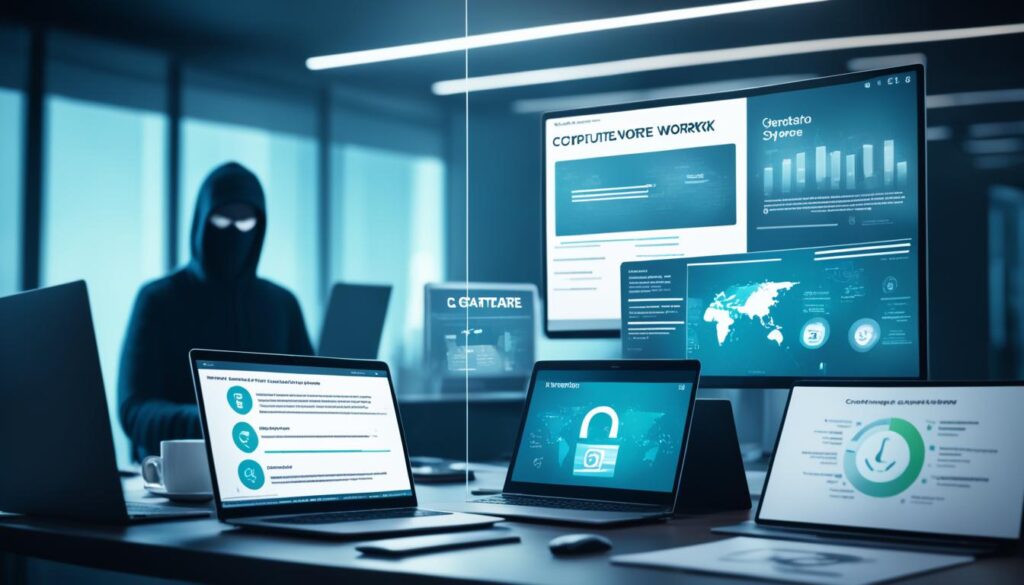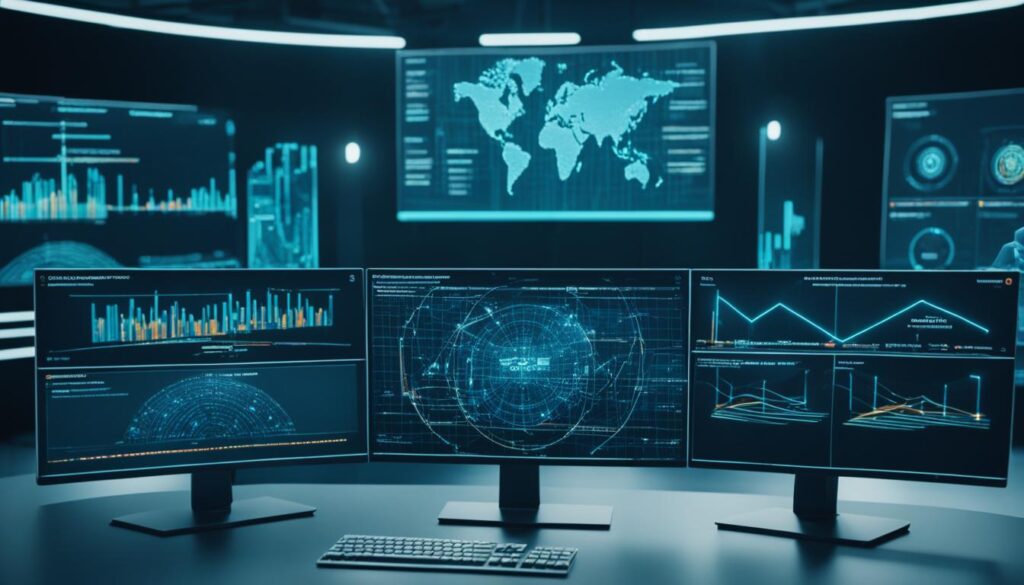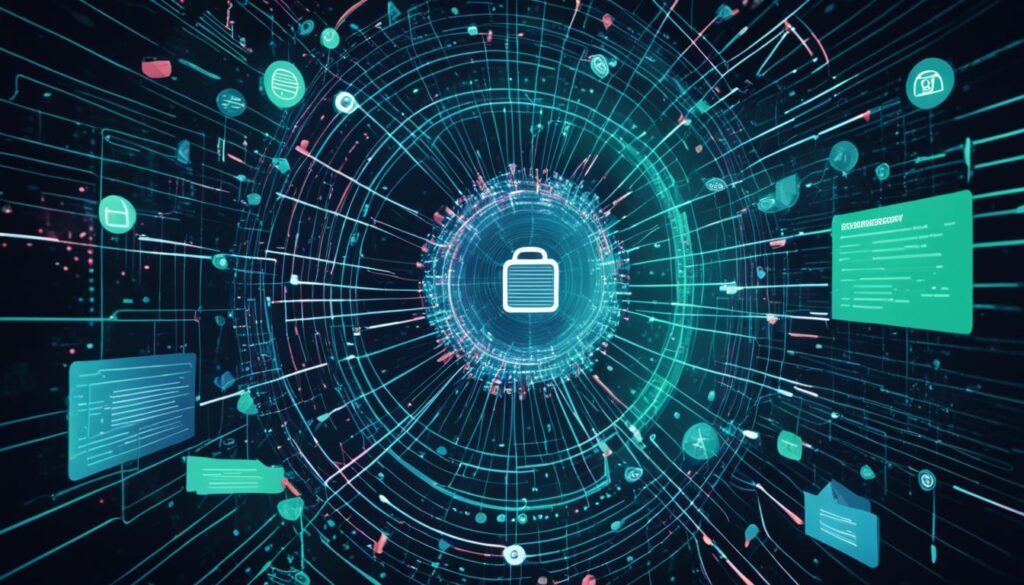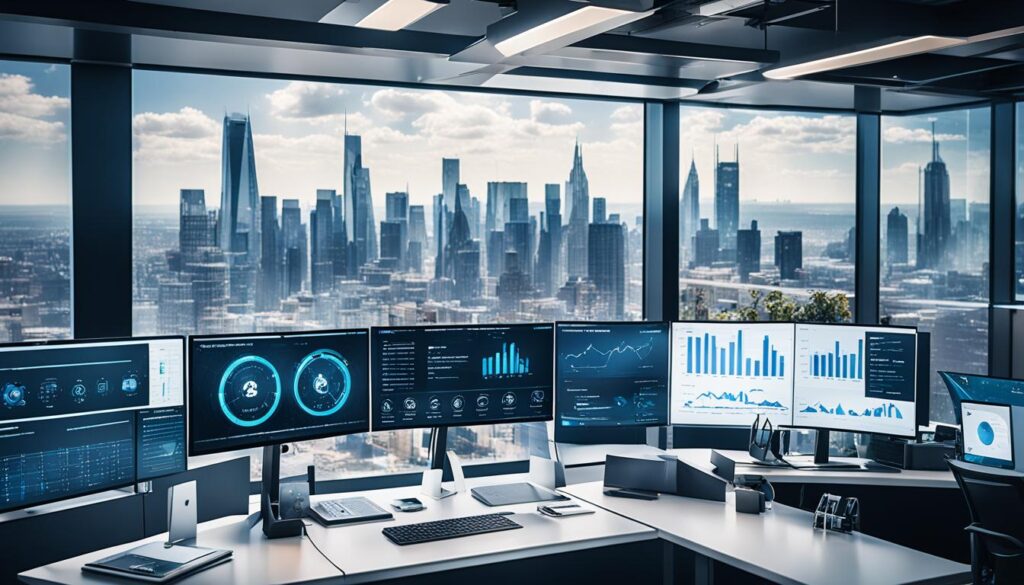Welcome to the world of cybersecurity in 2024! As remote work continues to shape our professional landscape, the need for robust cybersecurity measures has never been greater.
But what are the top trends and challenges that organizations must navigate in this new era of work? Join us as we explore the key cybersecurity considerations for remote work in 2024 and uncover strategies to protect your business from emerging threats.
From the accelerated adoption of remote work due to the COVID-19 pandemic to the expanding attack surfaces and vulnerabilities faced by organizations, we will delve into the unique cybersecurity risks posed by remote work environments. We will also examine emerging trends such as increased adoption of cloud-based security solutions and the rise of zero trust security models, which offer innovative approaches to safeguarding remote work environments.
Furthermore, we will discuss the best practices that organizations can implement to secure remote work, ensuring the protection of sensitive data and systems. From implementing strong authentication and access controls to providing regular cybersecurity training for remote employees, we will explore actionable strategies that can be tailored to your organization’s needs.
As we embark on this journey through the realm of remote work cybersecurity, we invite you to reflect on the following question: How can organizations effectively balance security and productivity in a world where remote work has become the new norm? Join us as we uncover the answers and equip you with the knowledge and tools necessary to navigate the ever-evolving cybersecurity landscape.
Key Takeaways:
- Remote work has accelerated the need for robust cybersecurity measures.
- The expanding attack surfaces and vulnerabilities in remote work environments pose unique risks.
- Emerging trends such as cloud-based security solutions and zero trust models offer innovative approaches to cybersecurity.
- Implementing strong authentication, encryption, and regular cybersecurity training are essential best practices for securing remote work.
- Organizations must balance security and productivity in the remote work era.
The Rise of Remote Work and Its Impact on Cybersecurity
The COVID-19 pandemic has forced organizations worldwide to rapidly adopt remote work, leading to significant implications for cybersecurity. The accelerated adoption of remote work has increased the attack surface for cybercriminals, as employees access corporate networks and data from unsecured home networks and personal devices.
This expansion of the attack surface has exposed organizations to new vulnerabilities and threats.
Additionally, the blurring of work and personal boundaries in remote work environments has raised concerns about data privacy and the security of personal and corporate information. It is essential for businesses to address these challenges and implement robust cybersecurity measures to protect against remote work-related threats.
| Impact of Remote Work on Cybersecurity: | Key Considerations: |
|---|---|
| Increased attack surface | Protecting against cyber-attacks originating from unsecured home networks and personal devices. |
| Blurred work/personal boundaries | Ensuring data privacy and securing personal and corporate information in remote work environments. |
Top Cybersecurity Risks in Remote Work Environments
Remote work environments introduce several cybersecurity risks that organizations need to be aware of. It is crucial to understand and address these risks to protect sensitive corporate data and maintain a secure work environment.
Unsecured Home Networks and Personal Devices
One of the main cybersecurity risks in remote work environments is the use of unsecured home networks and personal devices. When employees connect to their corporate networks using unsecured Wi-Fi or personal devices, they create potential entry points for cyberattacks.
These unsecured connections can be exploited by cybercriminals to gain unauthorized access, exposing sensitive corporate data.
Phishing Scams Targeting Remote Employees
Phishing scams have become a prevalent cybersecurity risk for remote employees. Cybercriminals use various tactics, such as spoofed emails, fake login pages, or phone calls, to deceive remote workers and gain access to their credentials and sensitive information.
Employees may unknowingly provide login credentials or click on malicious links, leading to data breaches and unauthorized access to corporate systems.
Weak Password Practices and Credential Theft
Weak password practices and credential theft pose significant risks in remote work environments. Many employees use simple or reused passwords, making it easier for cybercriminals to guess or obtain their credentials. If these credentials are compromised, cybercriminals can gain unrestricted access to corporate resources, potentially causing data breaches, financial loss, and reputational damage.
Insider Threats and Data Leakage
Insider threats and data leakage are additional concerns in remote work environments. Employees may intentionally or unintentionally share confidential information, leading to data breaches or unauthorized disclosure of sensitive data.
This can occur through accidental email attachments, improper data handling, or intentional data theft by disgruntled employees.
Compliance and Regulatory Challenges
Maintaining data privacy and security standards in remote work environments presents compliance and regulatory challenges for organizations. Remote work may involve accessing data across different jurisdictions, each with its own set of regulations.
Complying with these regulations, ensuring data protection, and mitigating risks can be complex and requires careful management and understanding of the applicable laws.
To protect against these cybersecurity risks, organizations should implement robust security measures, including secure network connections, strong authentication practices, regular employee training and awareness programs, and monitoring and auditing of remote user activities.
By addressing these risks proactively, organizations can mitigate the potential impact of cyberattacks and maintain a secure remote work environment.

Emerging Cybersecurity Trends in the Remote Work Era
The remote work era has given rise to emerging cybersecurity trends that address the unique challenges of remote work environments. These trends play a crucial role in safeguarding organizations against cyber threats.
Let’s explore some of the key trends shaping the future of remote work cybersecurity.
Increased Adoption of Cloud-Based Security Solutions

One of the prominent trends in remote work cybersecurity is the increased adoption of cloud-based security solutions. These solutions offer scalable and flexible security measures, enabling organizations to protect their data and systems regardless of employees’ physical locations.
By leveraging cloud-based security, businesses can establish a centralized security framework that provides comprehensive protection while minimizing the need for physical infrastructure.
Zero Trust Security Models Gain Traction
As remote work becomes more prevalent, zero trust security models are gaining traction as an effective way to secure remote work environments.
Zero trust security requires strict authentication and verification for every access request, ensuring that only authorized individuals can access confidential information and corporate resources. This approach eliminates the assumption of trust and implements robust security measures at every level of the network.
AI and Machine Learning for Threat Detection and Response

To combat the increasingly sophisticated cyber threats, the integration of AI and machine learning technologies has become essential. These technologies enable real-time analysis of vast amounts of data, facilitating early detection and response to cybersecurity incidents.
By leveraging AI and machine learning algorithms, organizations can identify patterns, anomalies, and potential threats, allowing for proactive mitigation and strengthening their overall security posture.
Emphasis on Endpoint Detection and Response (EDR)

Endpoint detection and response (EDR) solutions have gained prominence as a critical cybersecurity trend in the remote work era. With the increasing number of devices accessing corporate networks remotely, securing individual devices and endpoints becomes paramount.
EDR solutions provide advanced monitoring and threat detection capabilities, enabling organizations to swiftly respond to any security incidents on remote devices.
Secure Access Service Edge (SASE) Architectures
The adoption of secure access service edge (SASE) architectures is another emerging trend in remote work cybersecurity. SASE combines networking and security services, providing secure access to corporate resources for remote employees. This integrated approach ensures that users accessing the network are subjected to consistent security policies, regardless of their location.
By consolidating network and security functions, SASE architectures simplify the management of remote work environments while enhancing overall security.
As the remote work era continues to evolve, organizations must stay abreast of these emerging cybersecurity trends. By embracing cloud-based security solutions, implementing zero trust security models, leveraging AI and machine learning, prioritizing endpoint detection and response, and adopting SASE architectures, businesses can proactively protect themselves against evolving cyber threats.
These trends reflect our commitment to ensuring robust and resilient security in the remote work landscape.
Best Practices for Securing Remote Work

Securing remote work requires implementing best practices to protect against cyber threats. By following these security measures, organizations can safeguard their sensitive data and ensure a safe remote work environment.
Implement Strong Authentication and Access Controls
One of the fundamental steps in securing remote work is implementing strong authentication and access controls. Multi-factor authentication (MFA) adds an extra layer of security by requiring users to verify their identity using at least two different authentication methods.
Biometric verification, such as fingerprint or facial recognition, can also enhance authentication protocols and prevent unauthorized access to corporate resources. These measures help ensure that only authorized individuals can access sensitive information and systems.
Encrypt Sensitive Data in Transit and at Rest
Encrypting sensitive data is crucial to protect it from unauthorized access during transmission and storage. Data encryption involves converting data into an unreadable format that can only be decoded with an encryption key.
Encrypting data in transit, using secure protocols such as HTTPS or VPNs, ensures that information remains confidential when sent over networks. Additionally, encrypting data at rest, whether stored on local devices or in the cloud, adds an extra layer of protection against potential data breaches.
Provide Regular Cybersecurity Training for Remote Employees
Regular cybersecurity training for remote employees is essential to raise awareness about potential risks and educate them on secure practices. Training sessions can cover topics such as identifying phishing scams, creating strong passwords, recognizing malicious software, and understanding the importance of software updates.
By keeping employees informed about the latest cybersecurity threats and providing them with the knowledge and tools to protect themselves, organizations can significantly decrease the risk of successful cyberattacks.
Establish Clear Remote Work Policies and Guidelines
Establishing clear remote work policies and guidelines is crucial for maintaining a secure work environment. Remote work policies should outline acceptable device usage, data handling procedures, and reporting protocols for security incidents or breaches.
Moreover, guidelines regarding the use of personal devices for work-related tasks and the secure handling of sensitive information can help prevent inadvertent data leaks and ensure compliance with security regulations.
Monitor and Audit Remote User Activities
Monitoring and auditing remote user activities enable organizations to detect and respond to any suspicious behavior or security breaches promptly. By implementing monitoring tools and log analysis, businesses can identify and investigate any unusual activities or unauthorized access attempts.
Regular audits of remote user activities help ensure compliance with security policies and identify any gaps that may require additional safeguards.
| Best Practices for Securing Remote Work |
|---|
| Implement Strong Authentication and Access Controls |
| Encrypt Sensitive Data in Transit and at Rest |
| Provide Regular Cybersecurity Training for Remote Employees |
| Establish Clear Remote Work Policies and Guidelines |
| Monitor and Audit Remote User Activities |
The Role of Cybersecurity Professionals in the Remote Work Era
In the remote work era, cybersecurity professionals play a crucial role in protecting organizations from cyber threats. As the workforce becomes more distributed, these professionals need to adapt cybersecurity strategies to address the unique challenges that arise.
Adapting Cybersecurity Strategies for Distributed Workforces
Securing remote work environments requires cybersecurity professionals to rethink their strategies. They must ensure that remote employees have access to secure systems and resources, even when working outside of traditional office settings.
This may involve implementing additional security measures, such as multi-factor authentication or secure remote access protocols, to protect sensitive data.
Collaborating with IT Teams to Secure Remote Infrastructure
Cybersecurity professionals must work closely with IT teams to secure the remote infrastructure of organizations. This collaboration includes securing network configurations, virtual private networks (VPNs), and cloud services that remote employees rely on for their work.
By establishing strong partnerships between cybersecurity and IT teams, organizations can implement robust security measures that protect against potential threats.
Staying Updated with the Latest Cybersecurity Threats and Trends
Keeping up with the rapidly evolving cybersecurity landscape is vital for professionals in this field. By staying updated with the latest threats and trends, cybersecurity professionals can proactively identify and mitigate emerging risks.
This may involve attending cybersecurity conferences, participating in industry forums, or engaging in continuous education opportunities to stay ahead of cybercriminals.
Communicating Cybersecurity Risks to Remote Employees and Management
Effective communication is essential in ensuring that remote employees and management are aware of cybersecurity risks and their role in maintaining a secure work environment.
Cybersecurity professionals must articulate potential threats, best practices, and incident response protocols clearly and comprehensively. By providing ongoing education and awareness, they empower remote employees to make informed decisions that protect the organization’s data and systems.

| Key Roles of Cybersecurity Professionals in the Remote Work Era | |
|---|---|
| Adapting cybersecurity strategies to address the challenges of distributed workforces | |
| Collaborating with IT teams to secure remote infrastructure | |
| Staying updated with the latest cybersecurity threats and trends | |
| Communicating cybersecurity risks to remote employees and management |
The Future of Cybersecurity in a Remote-First World
The future of cybersecurity in a remote-first world requires organizations to address the unique challenges of long-term remote work while balancing security and productivity. As remote work becomes the norm, organizations must invest in cybersecurity talent and skill development to meet the increasing demand for qualified professionals who can effectively protect against evolving threats.
One key aspect of the future of cybersecurity is the adoption of automation and AI-driven security solutions. These technologies can greatly enhance the efficiency and effectiveness of cybersecurity operations by enabling quicker threat detection and response. With the rapid evolution of cyber threats, it is crucial for organizations to prepare and adapt to emerging challenges.
Image:

By embracing automation and AI-driven security solutions, organizations can leverage advanced technologies to stay one step ahead of cybercriminals. These solutions can automate routine tasks, such as security monitoring and incident response, freeing up cybersecurity professionals to focus on more strategic initiatives.
In addition to technology advancements, organizations must also stay proactive in implementing security measures and adapting to evolving cybersecurity threats.
This requires a comprehensive approach that includes regular vulnerability assessments, employee training, and the implementation of robust security protocols.
To enhance long-term remote work security, organizations should consider adopting a zero-trust security model. This approach requires strict authentication and verification for every access request, minimizing the risk of unauthorized access to sensitive data and systems.
Moreover, organizations should prioritize the development of remote work policies and guidelines that clearly outline expectations for remote employees regarding secure use of devices, data handling, and incident reporting.
An ongoing commitment to cybersecurity best practices, along with continuous monitoring and evaluation, is crucial to maintain a secure remote work environment.
This includes conducting regular audits of remote user activities to identify and address any potential security breaches or policy violations.
In summary, the future of cybersecurity in a remote-first world entails investing in talent and skill development, embracing automation and AI-driven security solutions, and preparing for evolving threats. By taking proactive measures and staying vigilant, organizations can navigate the challenges of remote work while safeguarding their digital assets.
Conclusion
In conclusion, the rise of remote work has brought forth a new set of cybersecurity trends and challenges that organizations must address to protect their sensitive data and systems. The accelerated adoption of remote work, along with the expanding attack surfaces and the blurring of work and personal boundaries, necessitates proactive cybersecurity measures.
Implementing best practices for securing remote work, adapting cybersecurity strategies, collaborating with IT teams, and staying updated with cybersecurity trends are essential steps. By doing so, organizations can strengthen their defenses and mitigate the risks associated with remote work.
The future of cybersecurity in a remote-first world demands finding the right balance between security and productivity. Investing in cybersecurity talent and skill development is crucial to meet the increasing demand for qualified professionals who can effectively address evolving threats. Embracing automation and AI-driven solutions can enhance the efficiency and effectiveness of cybersecurity operations. Additionally, organizations must prepare for evolving threats and challenges by staying vigilant and adaptable.
By taking these measures and maintaining ongoing vigilance, we can navigate the cybersecurity landscape of the remote work era and ensure the security of our digital environments.

